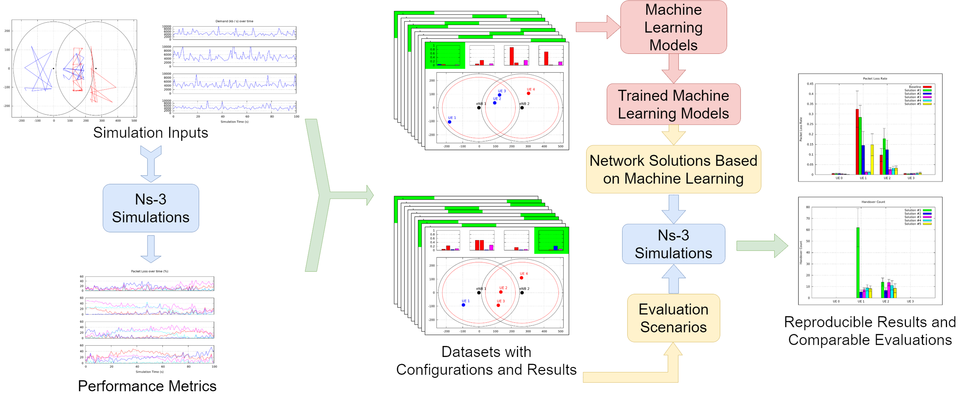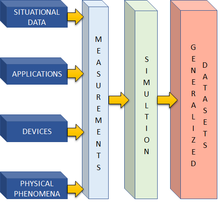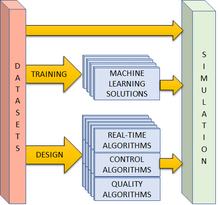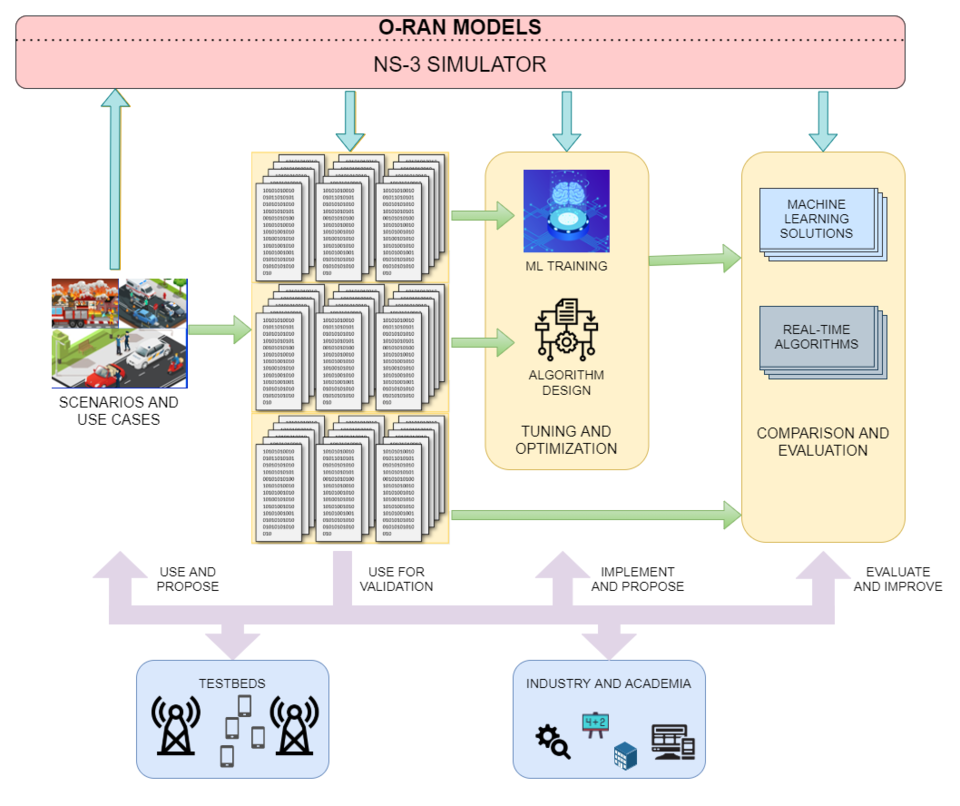Summary
In today’s rapidly evolving wireless communication landscape, where network complexity continues to rise, data-driven network optimization is essential to address key challenges like resource management, spectrum sharing, and real-time optimization. NIST’s initiative integrates Artificial Intelligence (AI) and Machine Learning (ML) techniques with network modeling and prototyping, enabling more efficient evaluation of 5G and next-generation networks. These AI/ML-based solutions enable network optimizations, making future networks adaptive, scalable, and robust to meet the growing demands of next-generation wireless systems.
Description
Research Highlights
AI Innovations in Spectrum Sharing for Wireless Networks
With the increasing demand for wireless communication, efficient spectrum management has become essential. NIST is exploring the application of AI/ML techniques to optimize this area, particularly through solutions like ProSAS and AdapShare. Key solutions from these projects provide tangible examples of AI’s transformative impact on network management:
- ProSAS utilizes predictive ML models to optimize spectrum sharing between 4G Long Term Evolution (LTE) and 5G New Radio (NR) networks. It intelligently predicts radio resource demand patterns using real-world LTE data and synthetic NR data, minimizing resource surpluses/deficits, and allowing for efficient coexistence of networks.
- AdapShare, on the other hand, leverages Reinforcement Learning (RL) to implement dynamic spectrum sharing in real time. The RL-based approach allows the system to learn from dynamic network conditions and adapt to varying demand patterns, outperforming quasi-static allocation methods like ProSAS.
Both, ProSAS and AdapShare, are compatible with Open Radio Access Network (O-RAN) and can be flexibly deployed as either a RAN application (rApp) in the non-real-time (non-RT) RIC or as an external application (xApp) in the near-RT RIC. When deployed as an rApp, the solution operates within the non-RT RIC, focusing on long-term data analysis and optimization. The policies generated by the rApp are communicated to the near-RT RIC for real-time implementation, making this deployment ideal for applications that do not have stringent latency requirements. The overall deployment of the AdapShare within the O-RAN architecture as an rApp is shown in the illustration below. Alternatively, in the near-RT RIC, the AI/ML algorithm operates as an xApp, allowing for real-time resource allocation adjustments in response to immediate network demands. This scenario is particularly suited for fast-changing network environments where low latency and quick decision-making are critical.
Interference Management in Wireless Networks
NIST’s work on data-driven interference management in wireless networks focuses on integrating AI/ML within the O-RAN framework to address interference challenges in 4G, 5G, and future 6G networks. By leveraging O-RAN’s standardized architecture and AI capabilities, NIST explores solutions like the "Interference Detection, Prediction, and Optimization" use case proposed by O-RAN Alliance for enhanced real-time management. Specifically, NIST is investigating O-RAN’s capabilities to improve interference management in coordinated and uncoordinated scenarios, especially for public safety networks dealing with malicious interference or faulty equipment.
Beyond 5G: Preparing for 6G with Data-Driven Network Optimization
As networks evolve into 6G, the demands for ultra-high data rates, low latency, and massive device connectivity become paramount. Data-driven network optimization, powered by AI, is crucial for tackling these demands through advanced spectrum management, resource allocation, and network orchestration. The integration of AI technologies with open network architectures enables next-gen wireless systems to adapt dynamically, ensuring optimal performance across diverse applications like autonomous vehicles, extended reality (XR), and smart cities, and setting a strong foundation for future wireless innovation.
Data-Driven Network Modeling and Simulation

The ability to access, manipulate, and process data has allowed network researchers to focus on many network optimization problems that were previously intractable due to complexity and scale. Solutions that make use of Machine Learning (ML) techniques are becoming increasingly popular. However, the integration and utilization of ML in current networking research and development workflows is still cumbersome. The goals of this project are two-fold. The first goal is to integrate ML and network simulations, so that ML-based algorithms and optimizations can be evaluated and developed with minimal overhead. The second goal is to enable the use of simulated (or synthetic) data to train and evaluate ML models before they can be applied in real networks.


The technical approach consists of two major components. The first one (illustration on the left) is the use of network simulators to generate synthetic datasets that can be used by the research community for training and evaluation of novel ML-based solutions. Hence, network simulations can be configured to generate data for different configurations and topologies, even when actual hardware is not yet available. The second component (illustration on the right) is the integration of ML-based solutions in network simulations in order to enable the development of new network functionalities.
We have defined a process for incorporating ML models available in major frameworks such as TensorFlow and Pytorch in ns-3 simulations without the need for re-implementing and re-training said models. Using this process, we have developed a proof of concept based on an architecture similar to what is proposed by the O-RAN Alliance. This includes a Radio Access Network (RAN) Intelligent Controller (RIC) that contains a data repository where all relevant simulation information reported by the simulation nodes is stored, and Logic Modules that act based on the information in the repository and generate commands to alter the network’s configuration and operational parameters.

The benefits and applications of the effort are as follows:
- Faster Development: The platform accelerates the testing of AI and ML algorithms in simulation, allowing for quicker deployment in real networks.
- Dataset Generation: It supports the creation of large synthetic datasets for training ML models, crucial for validating algorithms in a variety of network scenarios.
- Scenario Validation: Researchers can design and validate new network setups, configurations, and assumptions before deploying in real-world networks.
In summary, NIST’s data-driven network optimization project lays a solid foundation for future advancements in wireless communication, combining advanced AI algorithms with network simulation to address 5G complexities and prepare for 6G’s demands. Through real-time performance optimizations, this project ensures networks will be adaptive, efficient, and ready for future technological landscapes.
Major Accomplishments
- Garey, W., Rouil, R., Black, E., Ropitault, T. and Gao, W. (2023), O-RAN with Machine Learning in ns-3, Workshop on ns-3 (WNS3) 2023, Ballston, VA, US, [online], https://doi.org/10.1145/3592149.3592157, https://tsapps.nist.gov/publication/get_pdf.cfm?pub_id=936291 (Accessed October 24, 2024)
- S. Gopal, D. Griffith, R. A. Rouil, and C. Liu, “ProSAS: An O-RAN Approach to Spectrum Sharing Between NR and LTE,” in ICC 2024 - IEEE International Conference on Communications, 2024, pp. 360–366.
- S. Gopal, D. Griffith, R.A. Rouil, and C. Liu, “AdapShare: An RL-Based Dynamic Spectrum Sharing Solution for O-RAN,” 2024. [Online]. Available: https://arxiv.org/abs/2408.16842. (Accepted for publication at IEEE CCNC 2025).

